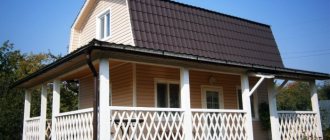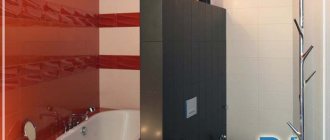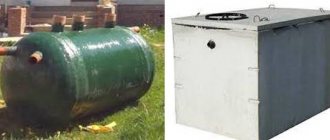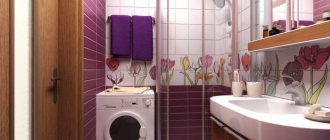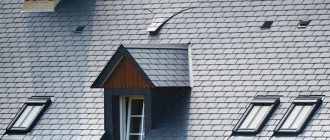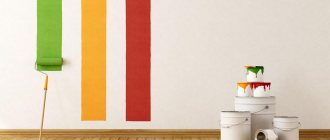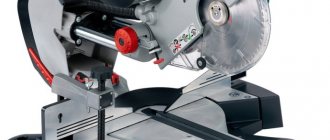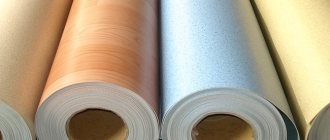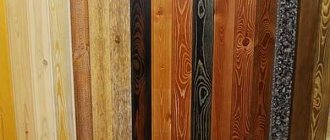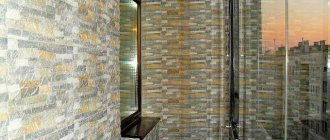The abundance of various modern materials for interior decoration has not eclipsed the long-known lining.
The technology for the production of wooden planks has been improved many times and currently provides the production of products that can be used for both external and internal construction work.
Surface covering is simplified thanks to the convenient design of the joining points of the planks. The assortment presented on the market allows you to choose the type of lining with an acceptable price for each customer and an appearance that matches the interior.
Advantages of lining as a finishing material
Today, lining is a material that can be classified as a universal type of finishing. It boasts an original design; when assembled, the canvas provides sound and heat insulation. The lamellas available for sale are a ready-made finishing option that does not require additional processing. They are installed quite simply. Anyone with basic construction skills can renovate an entire house on their own.
Light finishing for interior decoration Source kontioturkiye.net
What is lining? These are long strips of different shapes and sizes. They are specially created for interior decoration of residential premises. Today, different types of materials are used as a basis. Each product has its own advantages and disadvantages, they must be taken into account in order to know which lining is best to use for interior decoration of the house.
Calculation of the cost of finishing
Let's consider a simple option:
- To decorate a 4x5x2m room, you need (5x2x2+4x2x2) m2 of a certain type of lining (take, for example, wooden). 36m2 of heavy lining requires a strong frame made of timber 3x3cm or more long, 5m x 4m x 5 horizontal frame levels (every 40cm from the floor level) = 100 m of timber.
In addition, fasteners: dowels plus self-tapping screws for timber (at least 100 pairs per 100m), plus fastening of the lining to the frame (number of sheets, depending on the width, for example, 10 cm) x 5 levels of the frame. A wall 5m long and 2m high will require (5/0.1) x 5 levels of frame = 250 mounting brackets. For all walls of the room this quantity will be equal to 250x2+200x2 = 900 pieces.
By studying prices on the trading platform, you can calculate the estimated cost of repairs. Added to this is the cost of hiring workers if necessary. If the resulting number does not match the budget, you should think about choosing a different type of raw material. MDF boards are 30-50% cheaper than wood boards. Plastic lining is also 40% more profitable. A metal frame can cost more than a wooden beam; the method of fastening the lining also varies from cheap, but short-lived, to durable, but with a frankly extortionate price.
An additional price will have to be paid for varnishes, antiseptics for the lining, leveling, and finishing primer of the walls. For more complex types of repairs (with insulation, installation of sound insulation, etc.), the price will include preparatory work, material, installation of these structures.
Types of lining
For the traditional manufacturing option, natural wood is usually used. It is an environmentally friendly material. With its help you can create beautiful interiors that will look solid and respectable from the outside. During the production process, the lamellas are well polished, chamfers are made along the edges, which are inserted into each other during assembly. The result is a textured canvas that can be used in its original form, or further decorated with paints and varnish.
The principle of connecting individual elements of the lining Source festima.ru
If the rooms are lined with wood, there is always a special microclimate inside the room. The material has a porous structure; it absorbs excess moisture, and then, with the onset of a dry climate, releases it to the air. Therefore, in houses lined with clapboards, a person feels very comfortable. During operation, the underlayment does not emit harmful chemicals. This quality is especially valuable in families with children and adults with a history of allergies.
The material described is easy to clean and boasts high resistance to mechanical damage. Today, manufacturers use only well-dried wood to make lamellas; in addition, it is coated with antiseptic impregnations and varnishes. They make the lining extremely resistant to almost all harmful influences.
Tenon and groove features of the lock connection Source lesprom.com
Over time, it does not deteriorate from moisture, does not fade in the sun, and is not eaten by bugs and bark beetles. Even mold and fungi settle on it reluctantly. If treated with care, repairs may not be necessary for the next twenty years or more. All this time, unsightly defects will not appear on the surface of the lining.
See also: Catalog of companies that specialize in finishing materials.
Detailed classification
There are different types of lining for interior decoration of a house. Manufacturers divide the described material into four classes.
Products of class “C” are lining of the lowest quality; when buying it, you need to be prepared for the fact that material will arrive on the surface of which there are chips or continuous cracks, knots that cannot fall out, or some other mechanical damage. Such slats are difficult to install and difficult to adjust to each other. Such samples boast a low price; they are usually used for finishing utility rooms.
Low quality “C” class lining Source regionles35.ru
Products of class “B” are lining of average quality. It is of the first category; it differs only in that there are no dents or cracks on it, but there are black knots and knots that match the wood. It is used to decorate walls if the lining is then planned to be painted.
Products of class “A” are linings on the surface of which there are no visible damages, but isolated knots may occur. Slight roughness is acceptable, but there should be no visible blue discoloration, wane, rot or wormholes on the surface of the wood.
“Extra” class products are linings that can boast of impeccable quality. The front side of the lamellas has a perfectly smooth surface, without any signs of damage. It is easy to assemble such material; clamps and staples are used for installation.
Extra class lining Source pomles.ru
Regular and eurolining
The lining owes its name to the need to protect goods from sun and rain that were transported by rail before the introduction of modern materials. The use of wood for lining carriages was the most appropriate, since it is not only cheaper than iron, but also better prevents the greenhouse effect.
Initially, the boards were fastened in the usual way, but over time, to simplify installation and prevent the appearance of cracks in case of any deformation, they began to be made with tongue-and-groove locks. The idea was appreciated and such boards began to be widely used in facing work.
In other languages, there is no such connection to the origin of the name, so when visiting foreign construction stores you should simply look for profiled boards. For their manufacture, the DIN 68126/86 standard is used, developed in Europe and, according to a number of requirements, is more stringent than the local GOST. Accordingly, products exported or simply manufactured according to DIN standards are familiar to domestic buyers as Eurolining.
Builders make a large number of complaints about ordinary lining, made according to Soviet standards, both in terms of characteristics and ease of installation. Humidity of 20-25% is too high - with a board thickness of 20 mm, deformations often occur during drying, which small locks cannot cope with, trying to jump out of the groove. The fleecy surface and the number of knots, which are not particularly controlled, make not only the shape, but also the quality of such products unimportant.
Profile of a standard lining manufactured in accordance with GOST.
As a result, eurolining, despite the price, is much more readily used by builders due to its advantages:
- A more thoughtful shape: a large tenon is not afraid of deformation, optimal thickness and width of the lamellas (12.5 and 88 (without the tenon, with it – 96) mm, respectively), the presence of ventilation grooves, the ability to choose a profile pattern.
- No lint is allowed on the front side, careful processing of the tongue and groove lock for ease of installation.
- All eurolining is dried to a moisture content of 10-15%, which negates the possibility of its deformation and the likelihood of bugs or rot. Dry boards are easier to store, process and care for during use.
- After cutting the wood, the boards, depending on their quality, are divided into at least four grades, taking into account manufacturing defects and the condition of the wood itself.
Video description
The video explains how to choose a lining and what technical characteristics to pay attention to:
Profile Features
The technical characteristics of the lining are changing all the time; manufacturers, modernizing equipment, produce new samples that differ from each other in different cross-sectional profiles. Taking into account this indicator, the assortment includes:
- eurolining;
- lining-calm;
- block house;
- soft line;
- American.
Eurolining for interior decoration Source les-archangelska.ru
No. 8. Which manufacturers can you trust?
Of course, the name and reputation of the manufacturer plays a significant role in the choice. Large companies will not risk their name and produce low-quality products. It is worth noting that today there are a lot of domestic companies on the market that produce lining of excellent quality. Imported products are present, but only in small quantities, so we will not divide manufacturers into foreign and domestic, but will give a general list of the best.
LUNAWOOD
A young Finnish company founded in 2002. Today it is a world leader in the production of thermowood, developing its own innovative methods and constantly improving. Wood treated with high temperature and steam loses nutrients and becomes resistant to any weather conditions, deformation and rotting. The company uses mainly pine wood, and its products are quite widely represented on the domestic market.
"Astar"
A domestic company operating since 2004. To produce various wood products, we use European equipment, which, together with the professionalism of our employees, allows us to produce products that meet European standards. The company's product range includes eurolining of different grades and with different parameters - from extra class to class C, with lengths from 1.8 to 3.6 m.
"Karelia"
The company was founded in 2004, and at that time it carried out work on the construction of wooden objects. Since it was not so easy to find high-quality material on the market, it was decided to create our own production. Today it is equipped with the most modern equipment, high-quality raw materials are used here, and constant quality control is carried out. Lining is produced from different species, with different profiles and parameters, so finding a suitable material will not be difficult.
"Vyatka Pine"
Completely waste-free production, founded in 1999. Equipped with Italian and German equipment, it has repeatedly received prestigious awards. The assortment here is constantly increasing, and the production of lining plays a key role. It is made from pine wood, and the manufacturer offers lining with different types of profiles and parameters.
Useful tips for choosing lining
Manufacturers offer a wide range of described materials; it is difficult to decide on the purchase of any one material. In order not to regret your choice later, you need to be more careful when choosing a specific product. Experts advise paying attention to:
For the presence or absence of manufacturing defects. It is important not to be lazy, open the entire package and check the quality of the front side of each board. It should be perfectly flat, without any curvature. If the lamella shows signs of deformation, you should refuse to purchase it. If this is not done, then a problem will arise during installation, which will be extremely difficult to eliminate.
On the quality of execution of combs and puzzles. If they have cracks, chips, or knots, you should not buy such material.
Cracks on a poorly level surface Source elka-palka.ru
Manufacturers offer different options for manufacturing the length of the processed board (from 30 cm to 6 meters). The width also varies. It is important to understand that the wider the lining, the more susceptible it is to deformation. This drawback can be eliminated if you take the sheathing step more often and fasten it more often.
Wooden lining can be combined with other finishing options. Options look good when the walls are partially covered with clapboard, partially decorated with wallpaper or covered with textured plaster.
It is important to purchase varieties of the material described, taking into account the chosen style direction.
Varieties
For the production of wood planks, different tree species, types of raw materials, and forms of surface treatment are used, which determines the existence of different types of products. It is much easier to choose products if you have an idea of the specific features of the material, its technical characteristics, and expected operating conditions.
When determining the grade of products, foreign manufacturers rely on European standards, while domestic manufacturers rely on both European and their own standards, developed taking into account the requirements of GOST.
Extra
The best products are designated as extra. Old-school consumers call this category premium. The highest grade lining has practically no defects: worm or ash spots, blue stains, sprouts, areas with rot. In most cases, spliced material belongs to this category, because in solid wood, be it linden, larch or other conifers, it is extremely difficult to find a large amount of ideal raw materials.
The highest grade lamellas have an absolutely smooth surface without knots, stains, chips, or cracks; it is vacuum packed in film to prevent damage during transportation and storage. Products should be secured very carefully using special adhesives. Properly installed cladding, coated with good varnish, has an elite appearance and is a worthy decoration of expensive interiors.
A (first)
According to the long-established classification, the next group of products can be called 1st grade products. Nowadays it is usually denoted by the letter A. In a minimal amount, it can have microscopic cracks and resin inclusions that do not have a through character.
The size of the knots is regulated; the diameter cannot exceed 15 mm, and the knots must not be sprouted. The maximum permissible size of black knots is 7 mm. Products of this type are most often used for cladding residential and administrative premises; The formation of a decent appearance of a high-quality surface can be completed by treating it with wax, oil or simply varnish.
B (second)
Grade B lamellas are usually called 2nd grade lining, which informs the buyer in advance about the possible presence of small defects. In each section with a length reaching 60 cm, there may be small flaws: cracks, dents, chips, with a total area of no more than 3 cm. The size of knots and bluish spots is also limited and should not occupy more than 10% of the plank area.
It is important to know that all of the indicated defects in 2nd grade products cannot have a through form. This should be noted during inspection. Installation of such lining requires experience, because the ends may contain small areas with unplaned wood. They do not interfere with joining and do not spoil the appearance of the cladding if installed correctly. Small flaws in the front surface are masked by grouting and painting.
Video description
In the video, the master talks about how he assembled the interior of the bathhouse from lining and stone:
To decorate living rooms with windows facing south, designers recommend choosing lining in dark shades of brown. To make it look good, it is important to have good artificial lighting; experts advise simply whitewashing and painting the ceilings. If you leave one of the walls in the room painted and cover the remaining three with wood, the design will only benefit from this. On the contrary, you can cover only one accent wall with clapboard, and wallpaper the other three. It will also look very good.
An interesting option for a combined design Source 1povagonke.ru
If you need to use lining to decorate a bedroom or kitchen, it is better to use light-colored lining for painting. If you paint it on top with white or light gray translucent enamel, you will get a cozy space. Light textiles with spot bright accents (tablecloths, bedspreads) go well with it.
In the bedroom, designers recommend finishing the wall with clapboard, next to which the head of the bed will then be placed. For this purpose, lining of any shape, any color is suitable. The main thing is that it is then linked to the overall range of interior content and decor.
No. 4. Which wood is better?
In fact, any wood can be used to make lining, but the properties of the lining will differ greatly, as will its price. Cheaper lining is not always worse, since the material should be chosen based on its operating conditions. As for the color of wood, its choice is a purely subjective opinion.
All lining that is present on the modern market can be divided into two main types:
- lining made of softwood;
- lining made of hardwood.
Coniferous wood has a high content of resins and essential oils, due to which it resists the formation of fungus and withstands high humidity. This material has found a wide range of applications; it is excellent for external cladding, but is completely unsuitable for saunas and baths. Under the influence of high temperatures, resin begins to release, and this process can continue for a long time. Not only does the material become sticky, but it can also spontaneously ignite. However, spruce and pine wood is used in Northern European countries to construct saunas, but the material is de-resined.
Most often, the following coniferous species are used to make lining:
- pine . It has a nice design, high strength, is inexpensive, but from time to time it needs to be varnished so that the material does not begin to darken;
- spruce _ Wood has excellent thermal insulation properties and a pleasant shade;
- larch . It is very resistant to external influences, does not warp even with significant temperature fluctuations, and is resistant to pests;
- cedar _ Expensive wood with excellent performance properties, color from yellowish to coffee.
Hardwoods are less durable, but do not emit resins and do not heat up well, which allows them to be used in baths and saunas. They require regular treatment, otherwise under the influence of external factors they will change color and deteriorate. The most popular hardwoods:
- oak _ The most durable and strong, resistant to rotting, dense, with a beautiful wood pattern, but such material also costs quite a lot;
- Linden . Wood has excellent soundproofing qualities and a subtle pleasant aroma; it is often used for finishing baths;
- ash _ Due to its high hardness, such wood does not crack at all. Color – dark yellow;
- black alder has a pleasant light coffee color and is resistant to moisture.
Separately, it is worth noting that only low-density wood is suitable for a bathhouse, otherwise the material will become very hot, which can result in burns.
What is
Almost all factories in Russia, whose field of activity is the production of construction wood (timber, boards, logs), also produce the so-called “profiled moldings”. This is what lining, including linden, refers to. What is lining? This is an edged board with a thickness of 7-20 mm. The top layer (front surface) of each is planed. The average width of lime lining is 90-150 mm. This makes it possible to use it as finishing even in non-standard rooms.
All products of profiled moldings have a distinctive feature - a special type of fastening. Each lamella is equipped with two fasteners - a groove on one side, a ridge on the other. Therefore, linden linings are often also called plastic panels (if they are made from it) or MDF.
In the Russian Federation, the most common and popular types of lining are considered to be wooden, made from: linden, oak, pine, larch, alder.
How can you further treat linden?
Even before installation, the lining panels must be treated with a protective antiseptic coating. This step will protect the material from putrefactive processes, mold, mildew, and the effects of ultraviolet radiation. Additional processing will extend the service life of the lining, protect it from dirt, and preserve its original appearance and color.
After applying the antiseptic composition, the lining can be painted using varnish or stain. When finishing the external walls of a building with linden clapboard, a similar procedure must be carried out annually. It is not recommended to use nitro varnishes for painting lining inside a room; for them, you should choose special types of varnishes for interior woodwork.
Coating characteristics
In addition to the variety according to the type of wood (this is one of the most important parameters of classifying qualities), each of the manufacturers also divides linden lining according to the following characteristics.
Humidity
The degree of humidity of the facing board can be natural and dry (the indicators of both should be within 10-15%). The difference between them is expressed in quality properties and cost. The dry variety will cost more, since the plant still undergoes an additional stage of processing - removing moisture. This type of lining is less likely to crack and warp.
Geometry and shape of profiles
Here the differences are based on the grade and type of lining:
- Standard;
- Block house;
- Eurolining;
- Under the beam.
Standard indicators (according to GOST) should be (in mm):
- Thickness – 12-25;
- Width – no more than 150;
- The maximum allowed length is 6000.
Gostov lining (12-16 mm thick) is used for finishing walls indoors. With large thickness values (16-25) - in the outer.
Eurolining
Euro lining made from linden is considered the most popular. It has constant indicators (in mm):
- Thickness – 12.5;
- Width – 60-160;
- Length – 1.8-6000.
Blockhouse lining
Material imitating galvanized logs. That is, its front side is not flat, like a regular one, but semicircular, convex. Used only for external wall decoration.
Under the timber
It has a second name - American, because it came to us from there - from overseas. It looks like a planed board equipped with tongues and grooves.
The side edges are cut and accurately emulate a wooden beam.
conclusions
Summing up the results of the comparison, we can give several recommendations on which wood paneling is best suited for you:
- make your choice based on your personal preferences about beauty, because the main purpose of the decoration is to make visiting the bathhouse pleasant and to set you up for relaxation;
- for long service life of the boards, follow the recommendations for their use applicable to various rooms;
- do not use pine needles when decorating the ceiling of a steam room.
We hope that this article will help you decide which lining to choose for the steam room and other sauna rooms.
With respect to you and your home, the information portal ProfSovet.
Classification with decoding
The entire range of linden lining is divided into classes:
- Extra is the highest grade variety. It is characterized by a complete absence of defects, microcracks, chips, and knots. Ideally, there should not be even a hint of fragments from the core on the surface;
- A – a small number of defects such as knots are acceptable, the diameter of which should not exceed 3 mm. As for their quantity, it should be no more than 2 pieces per 1 linear meter of material;
- B – the number of knots is greater, the diameter of defects is also greater (maximum permissible 10 mm). Slight variation in shade may occur;
- C – may have defects in the form of through holes left by fallen knots. The front layer may have a bluish tint.
The latest type of linden lining is considered technical and belongs to the budget segment.
